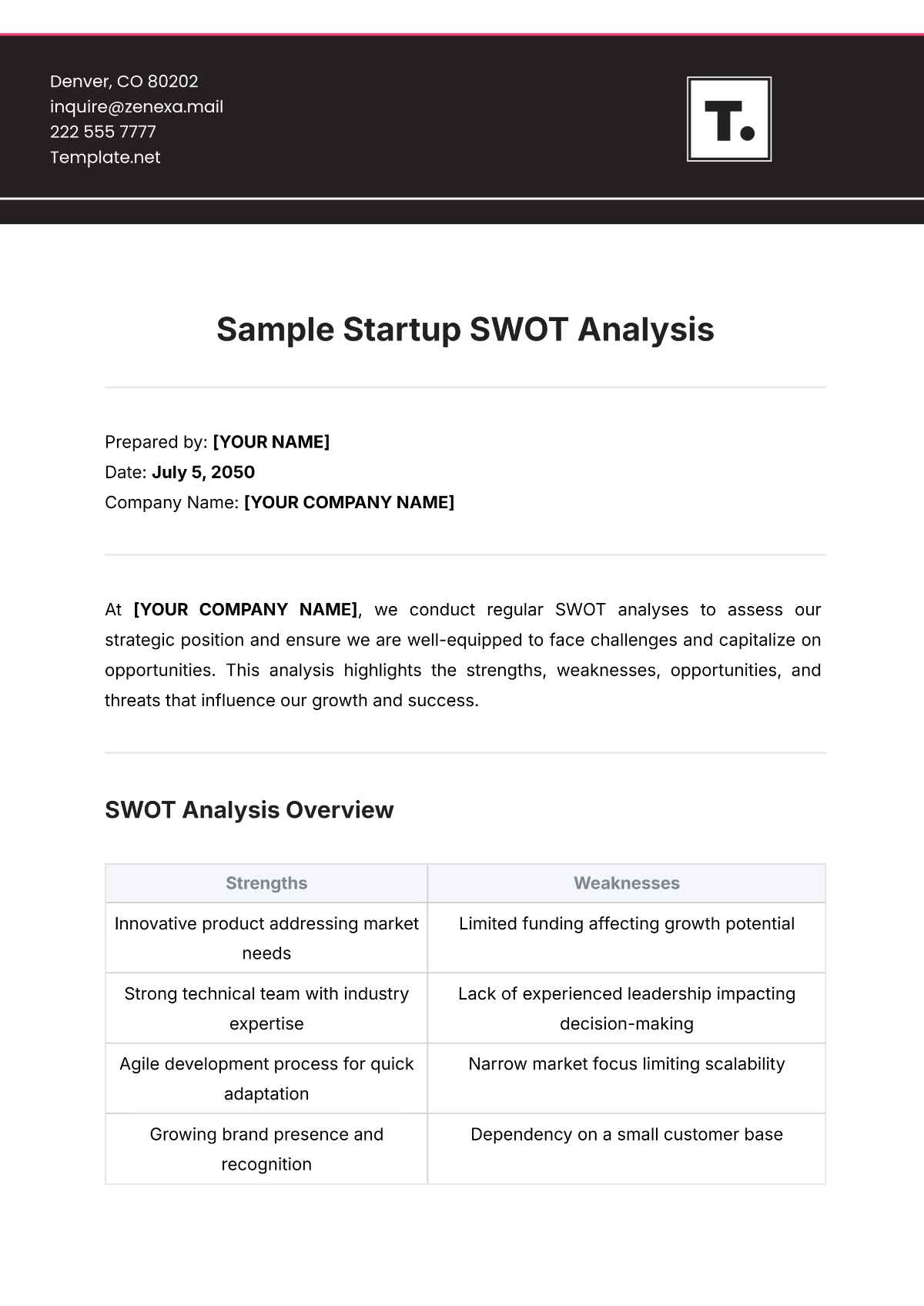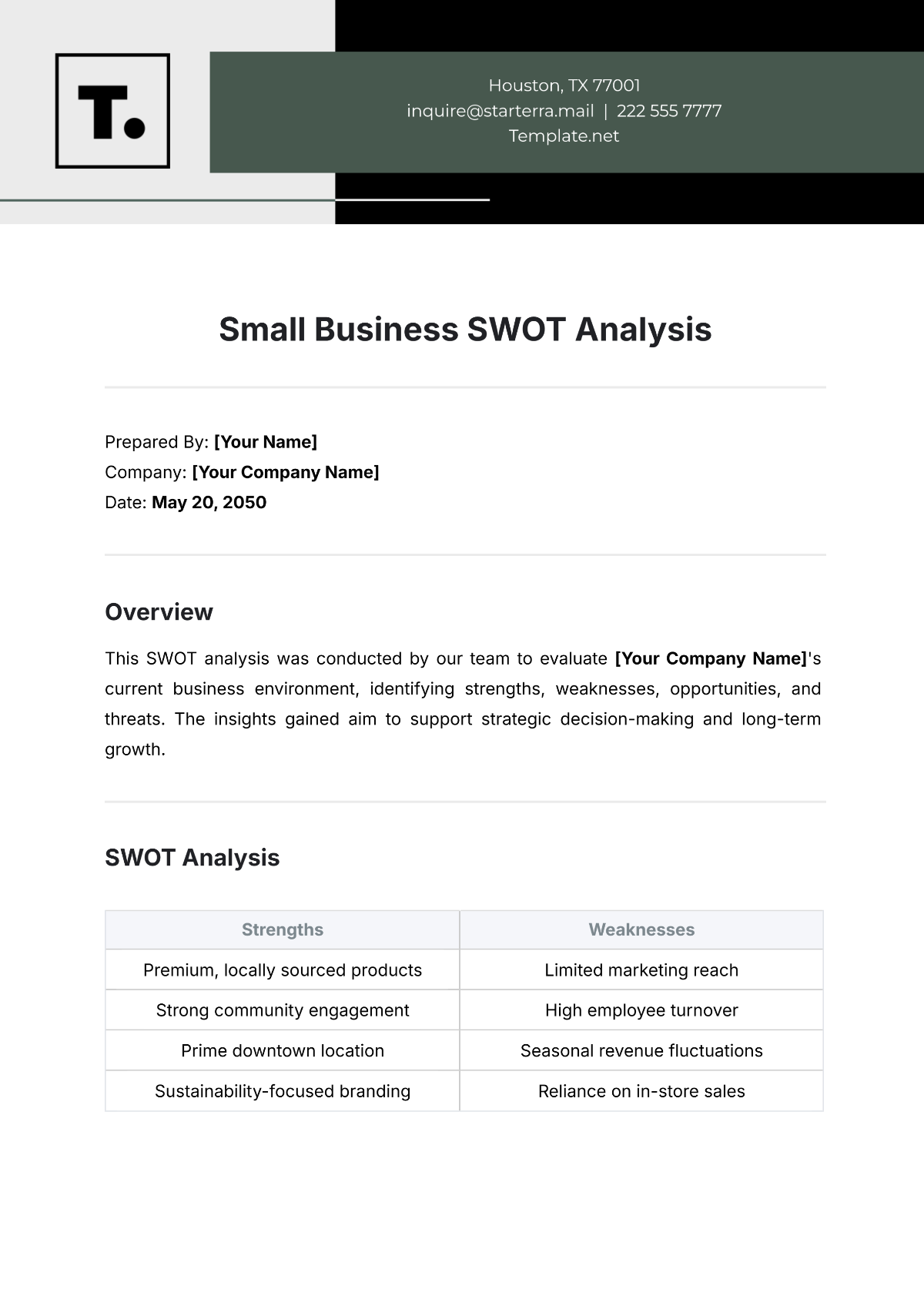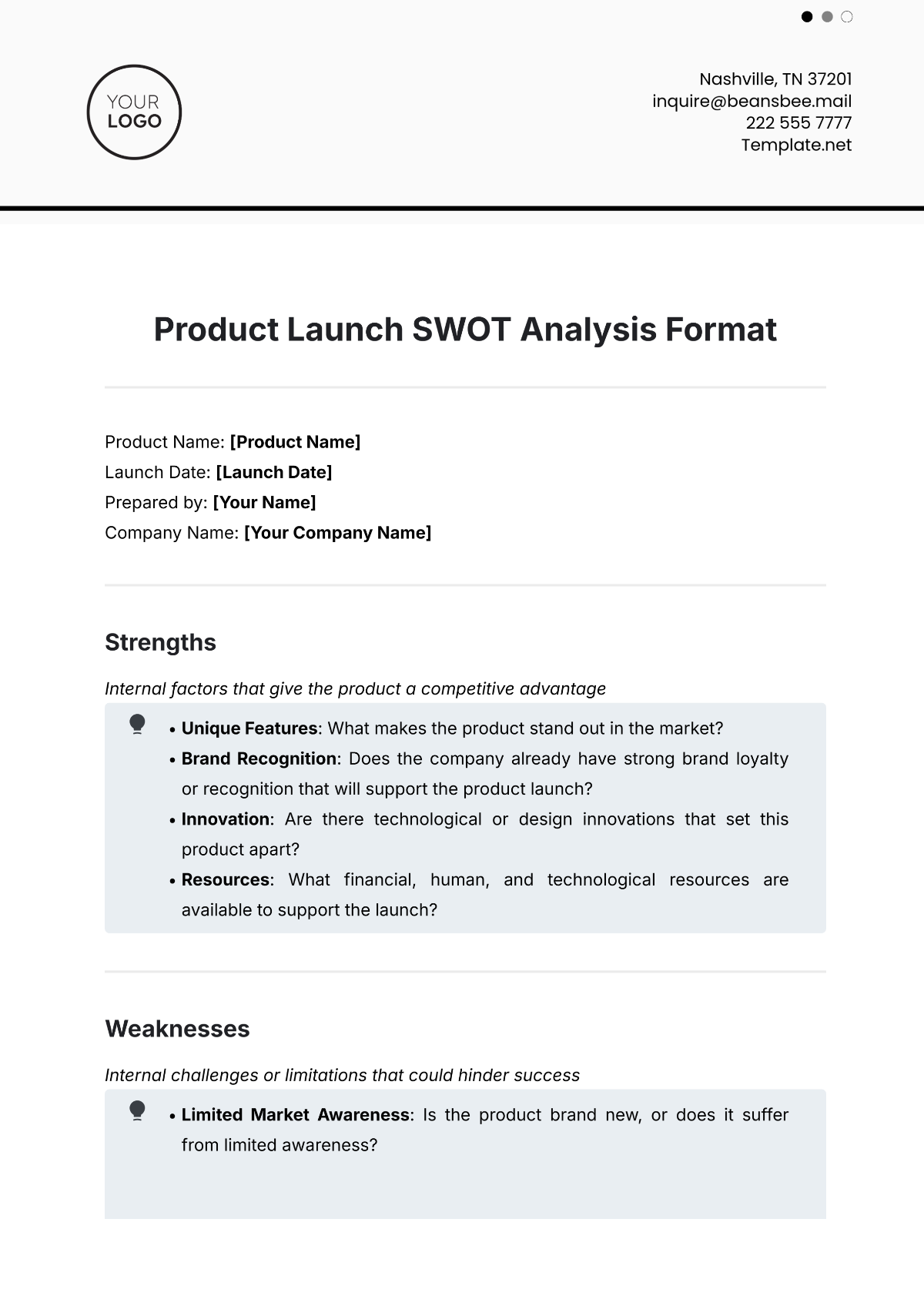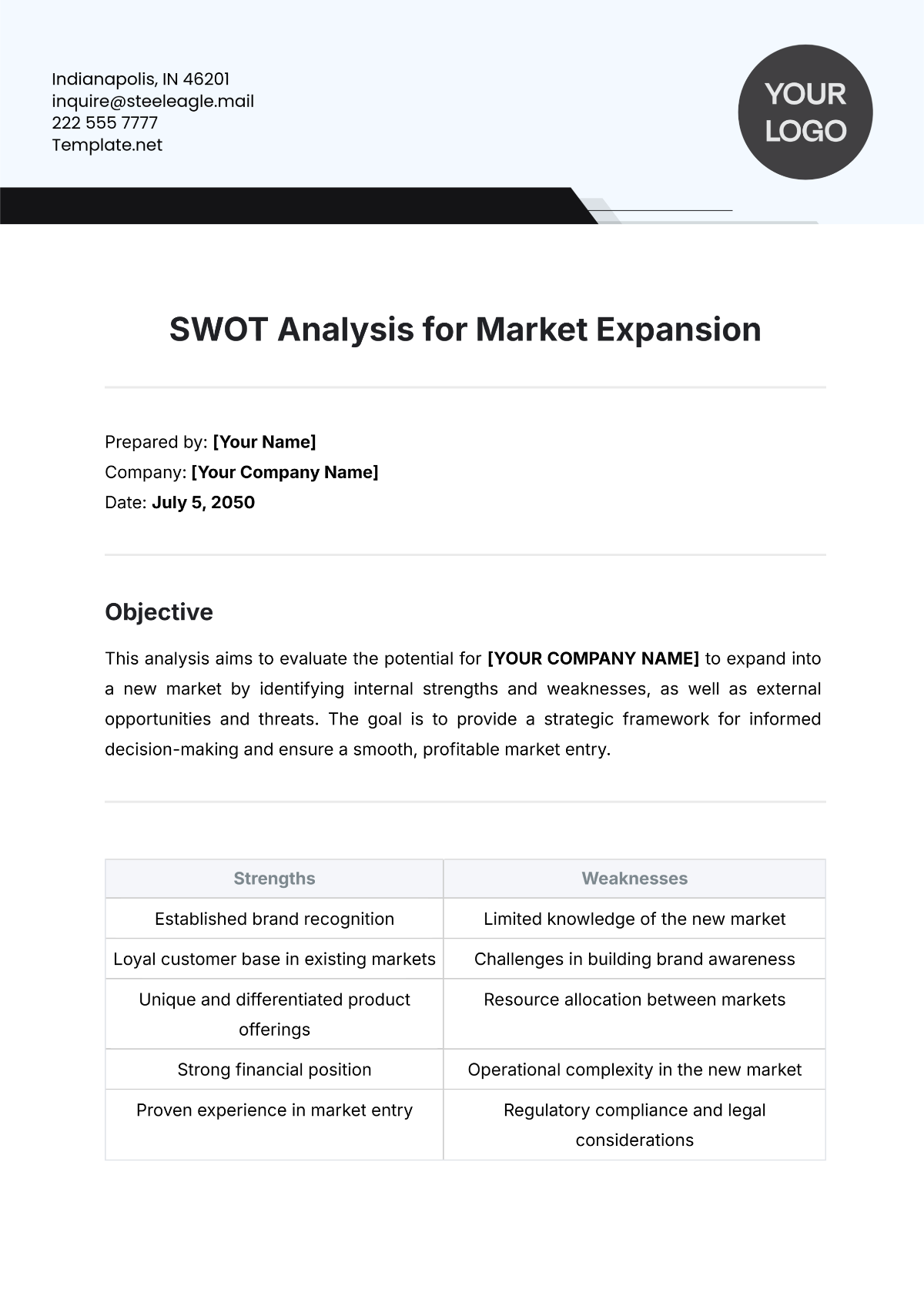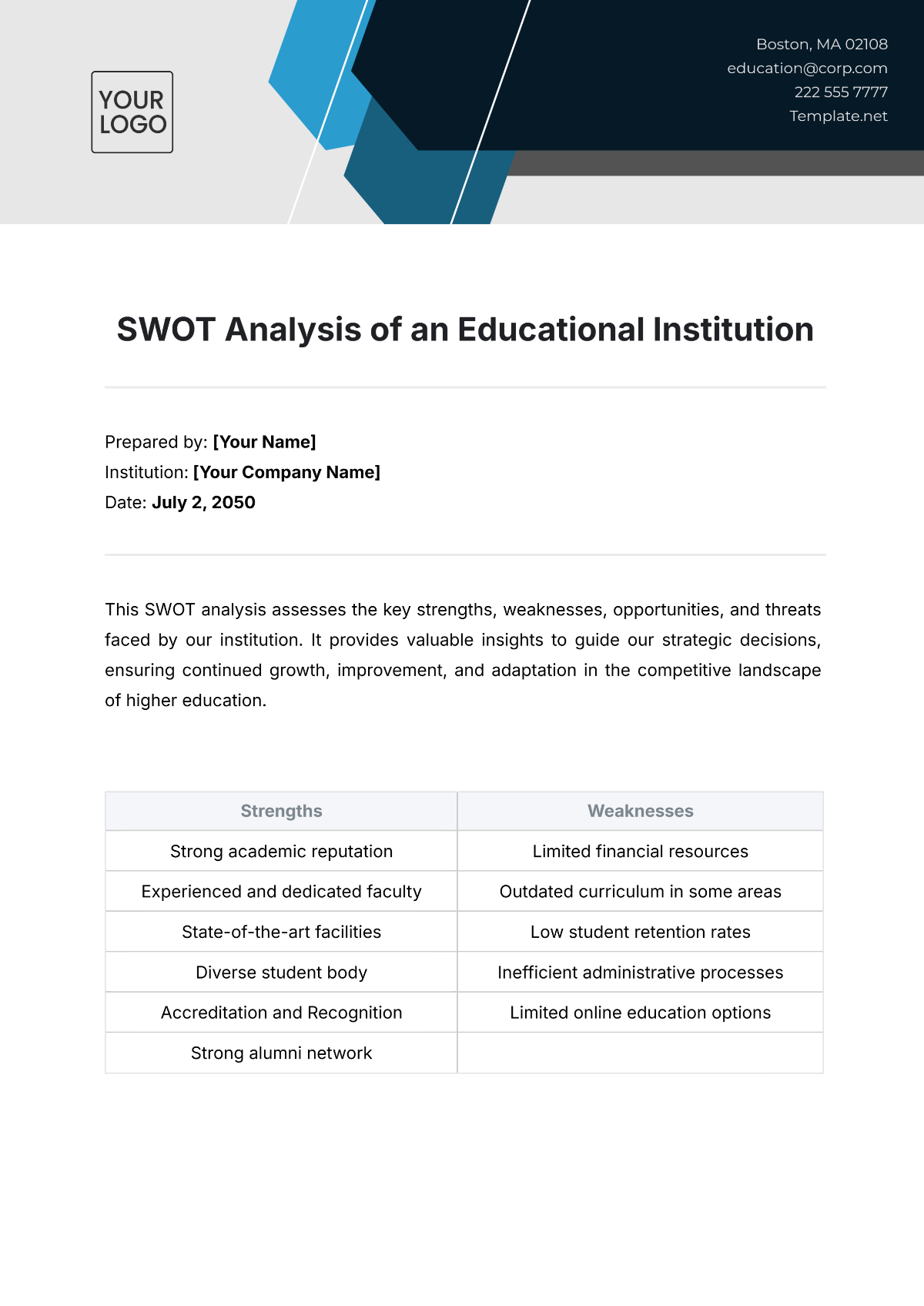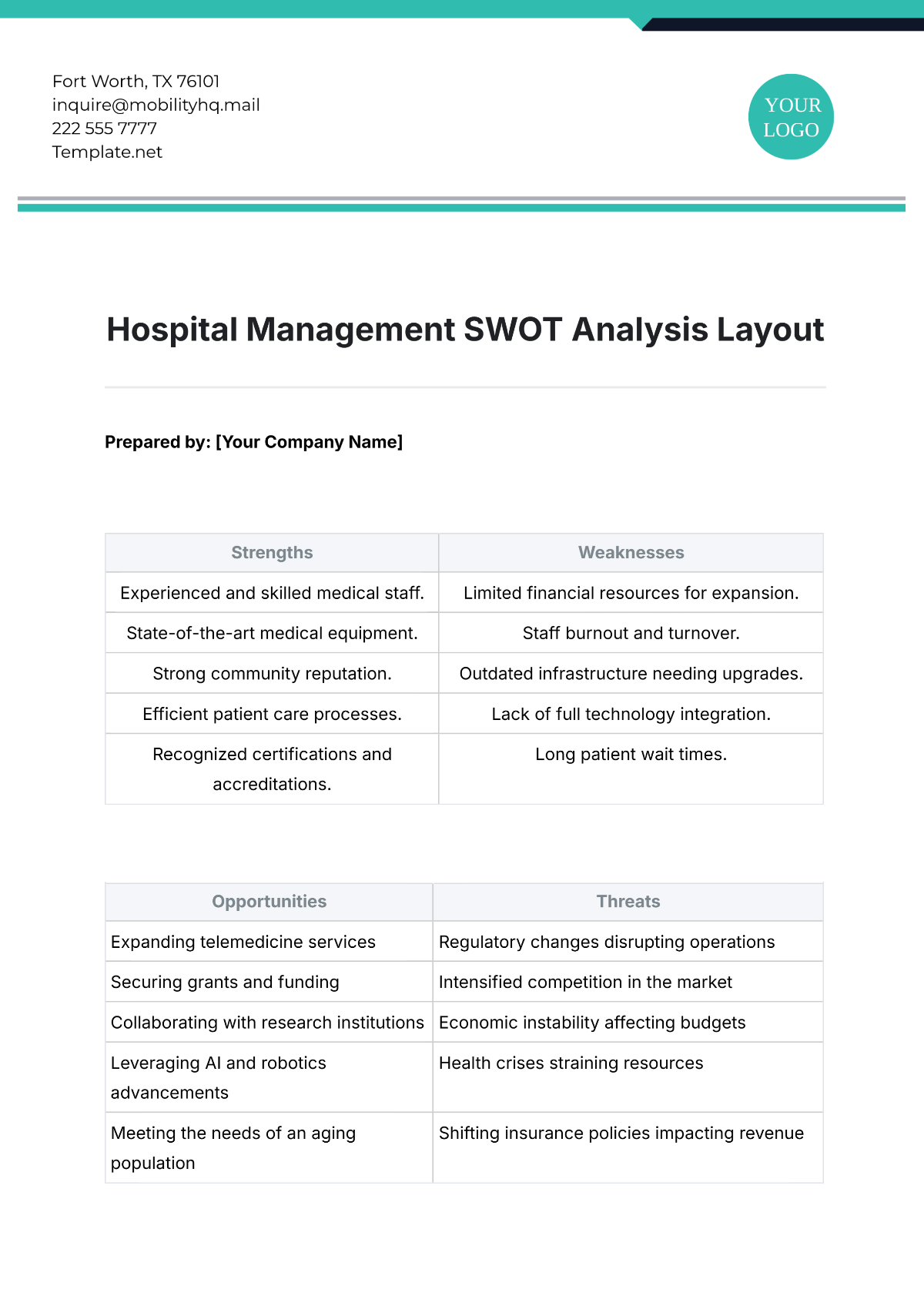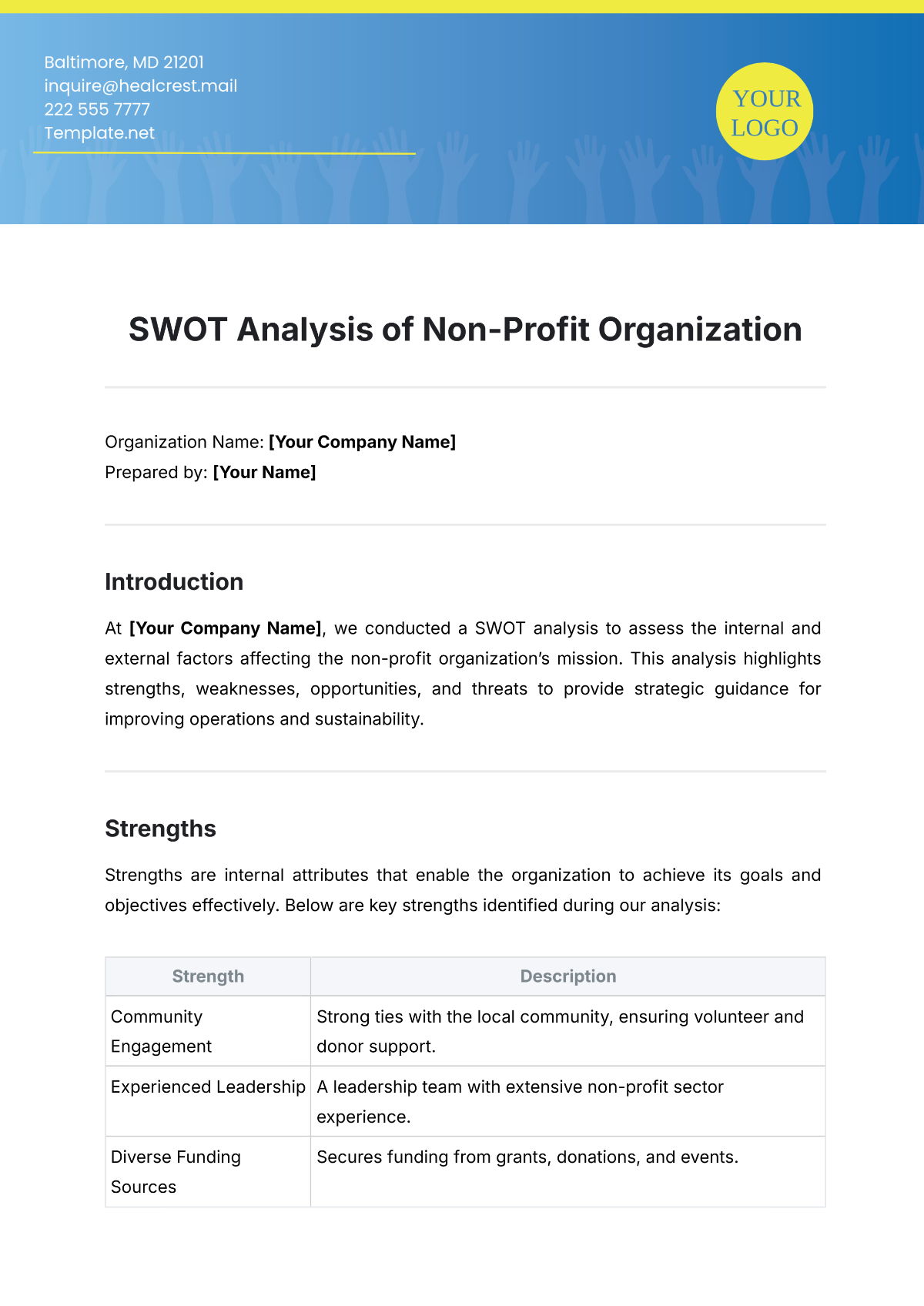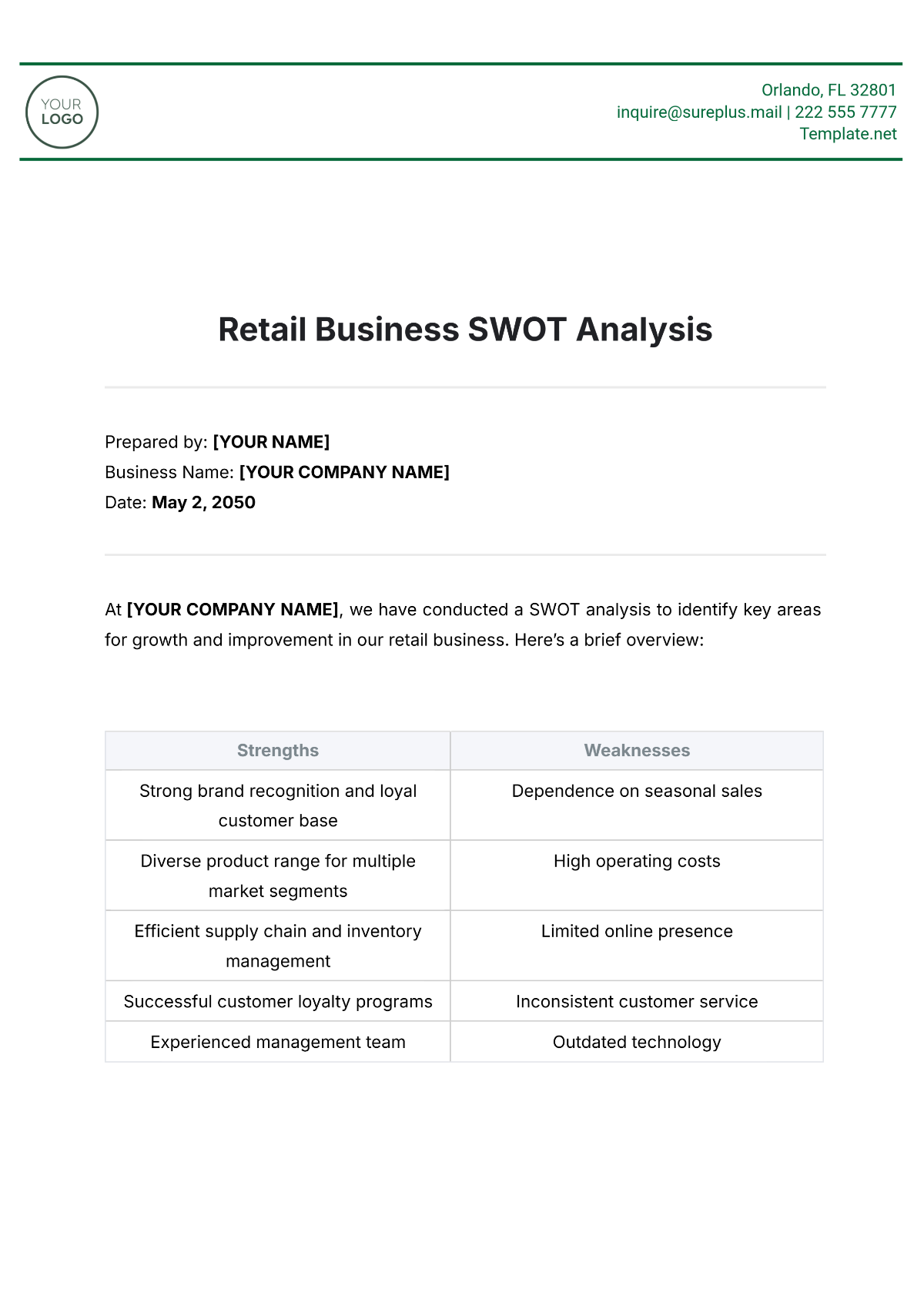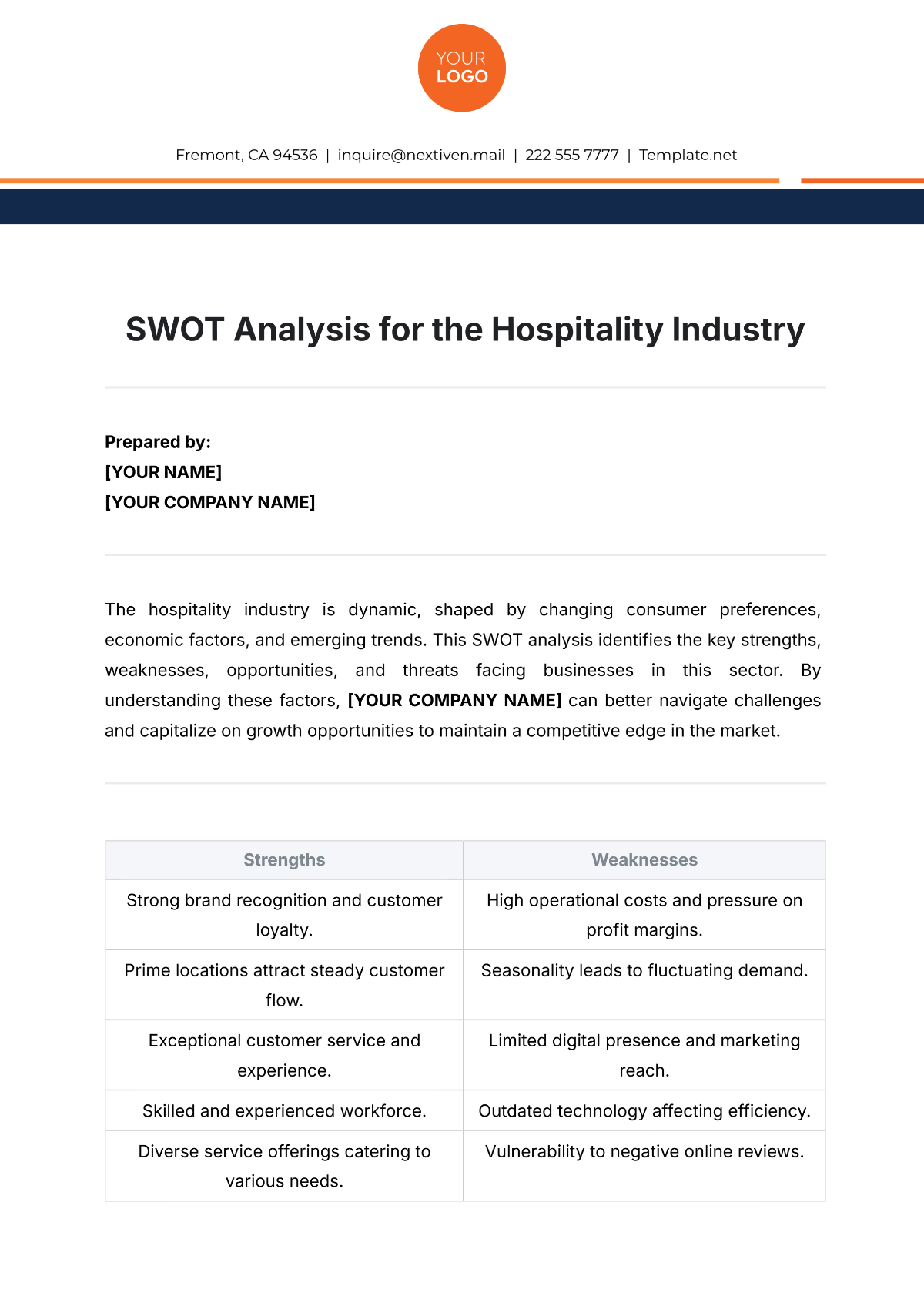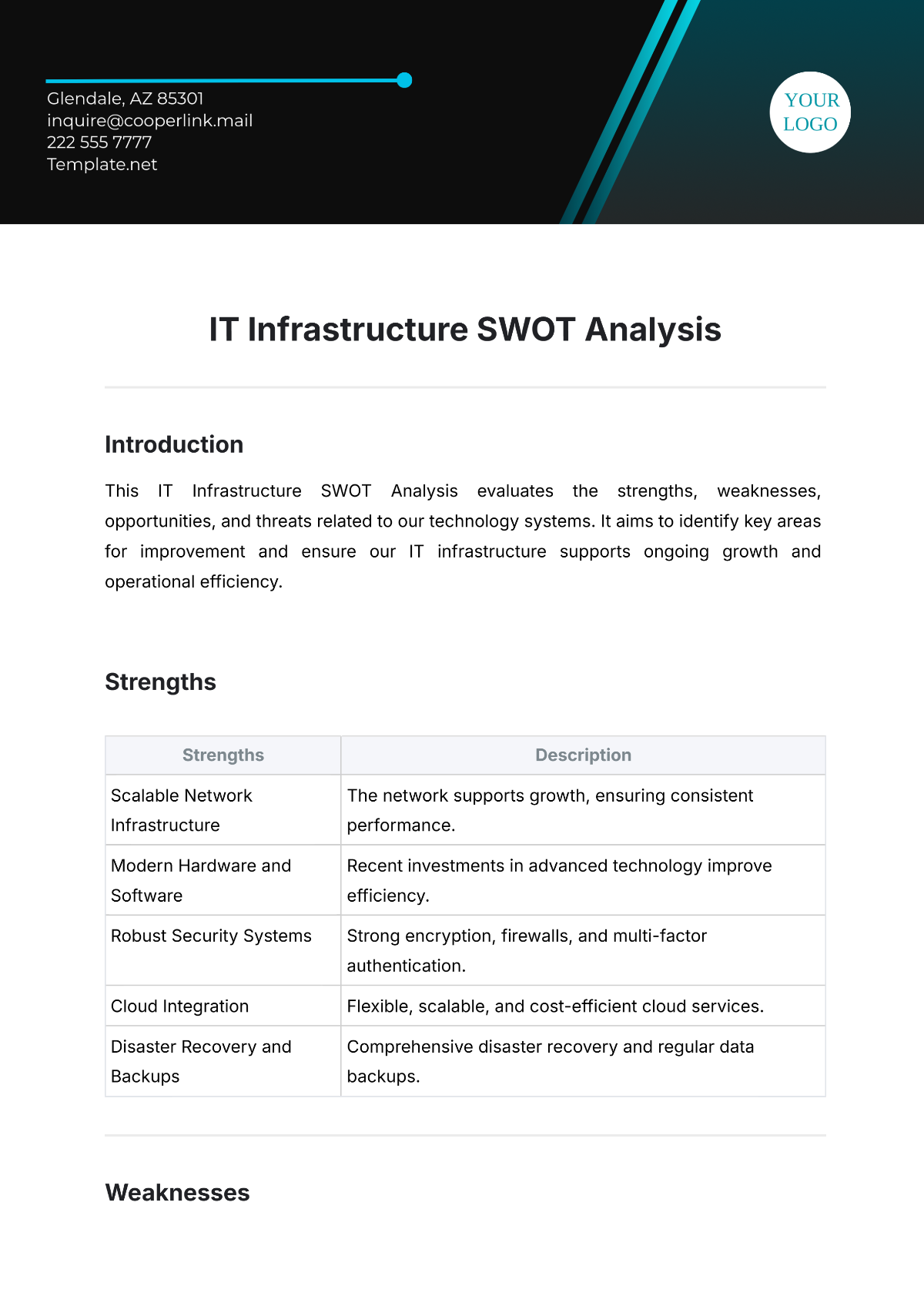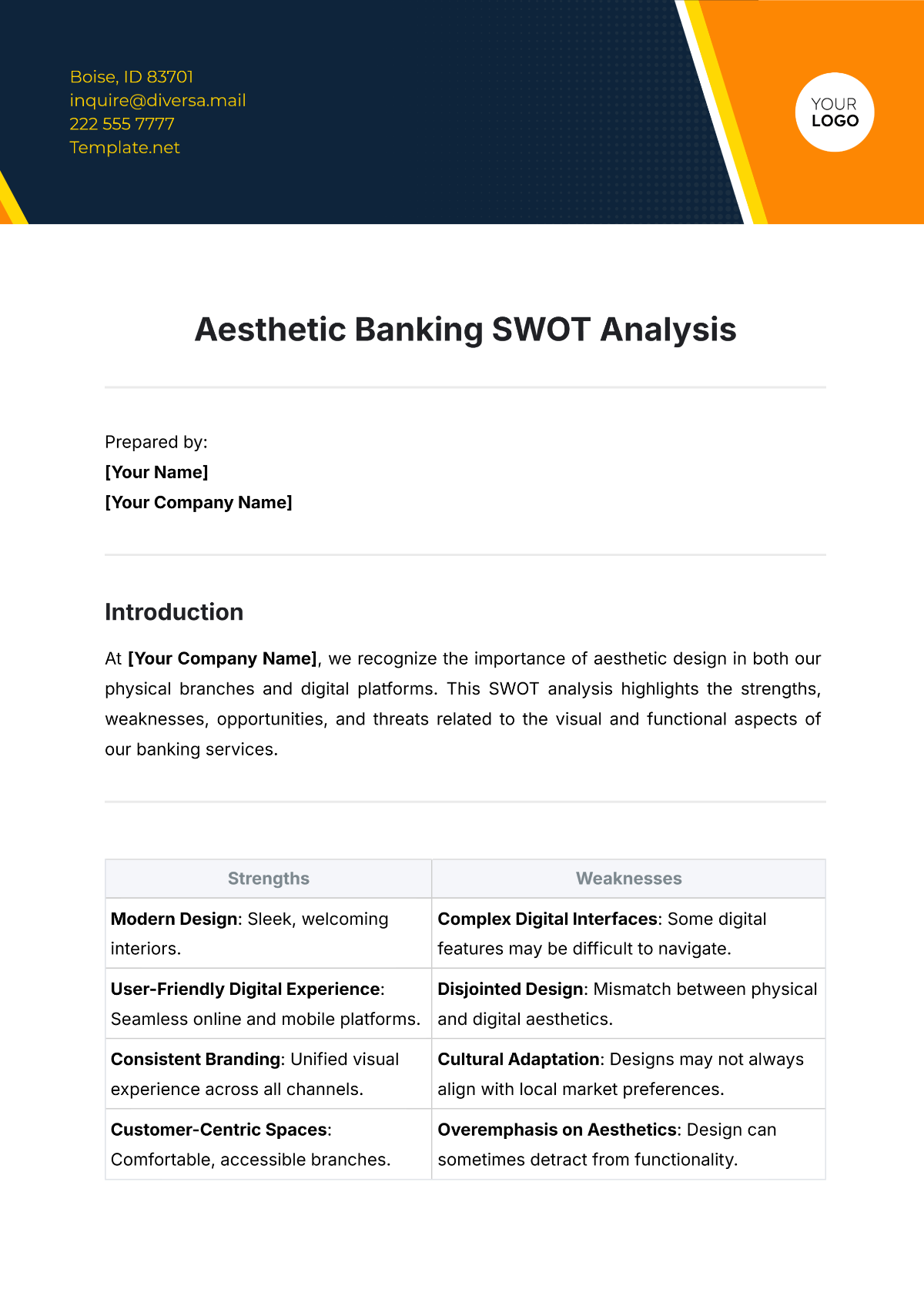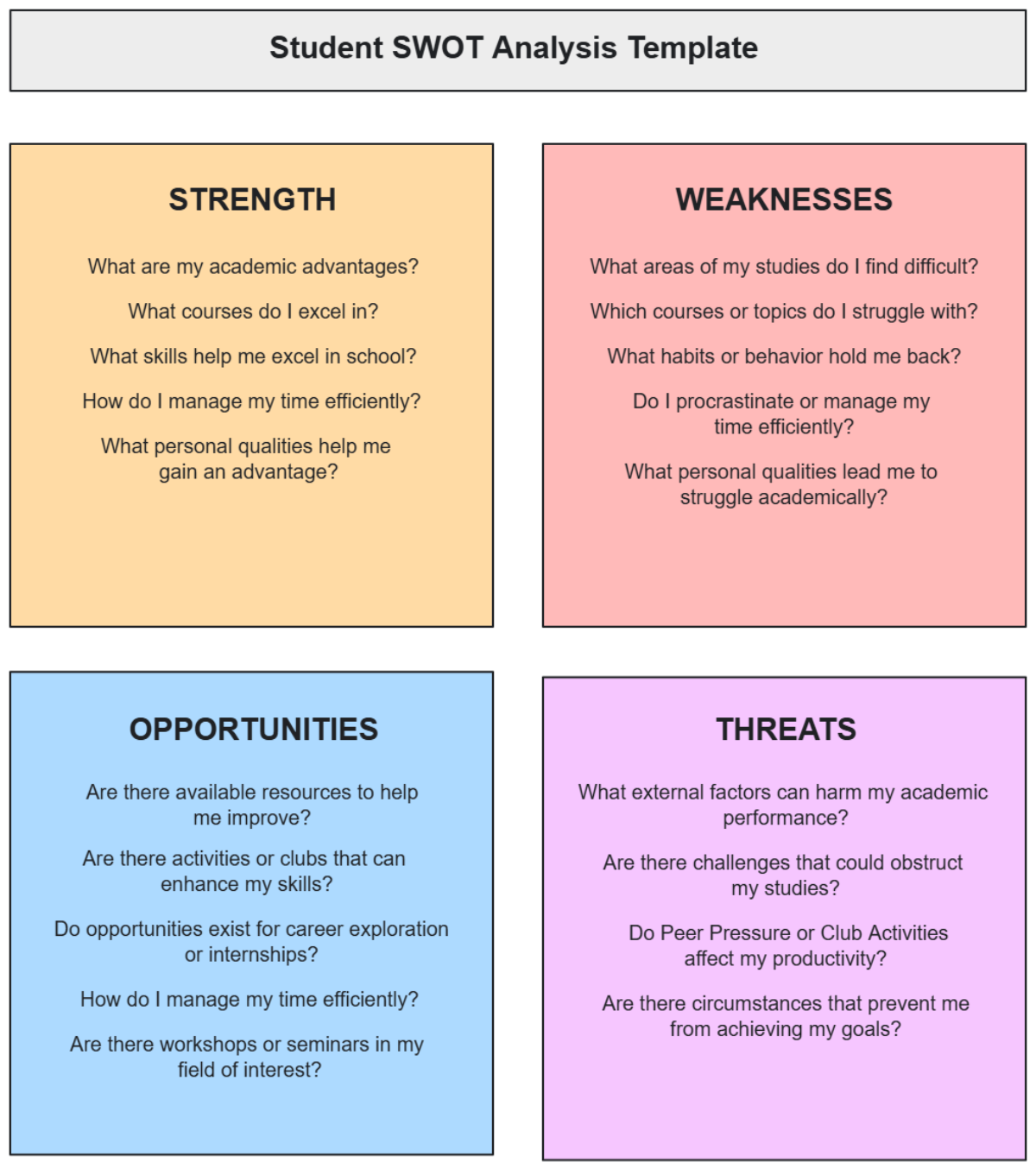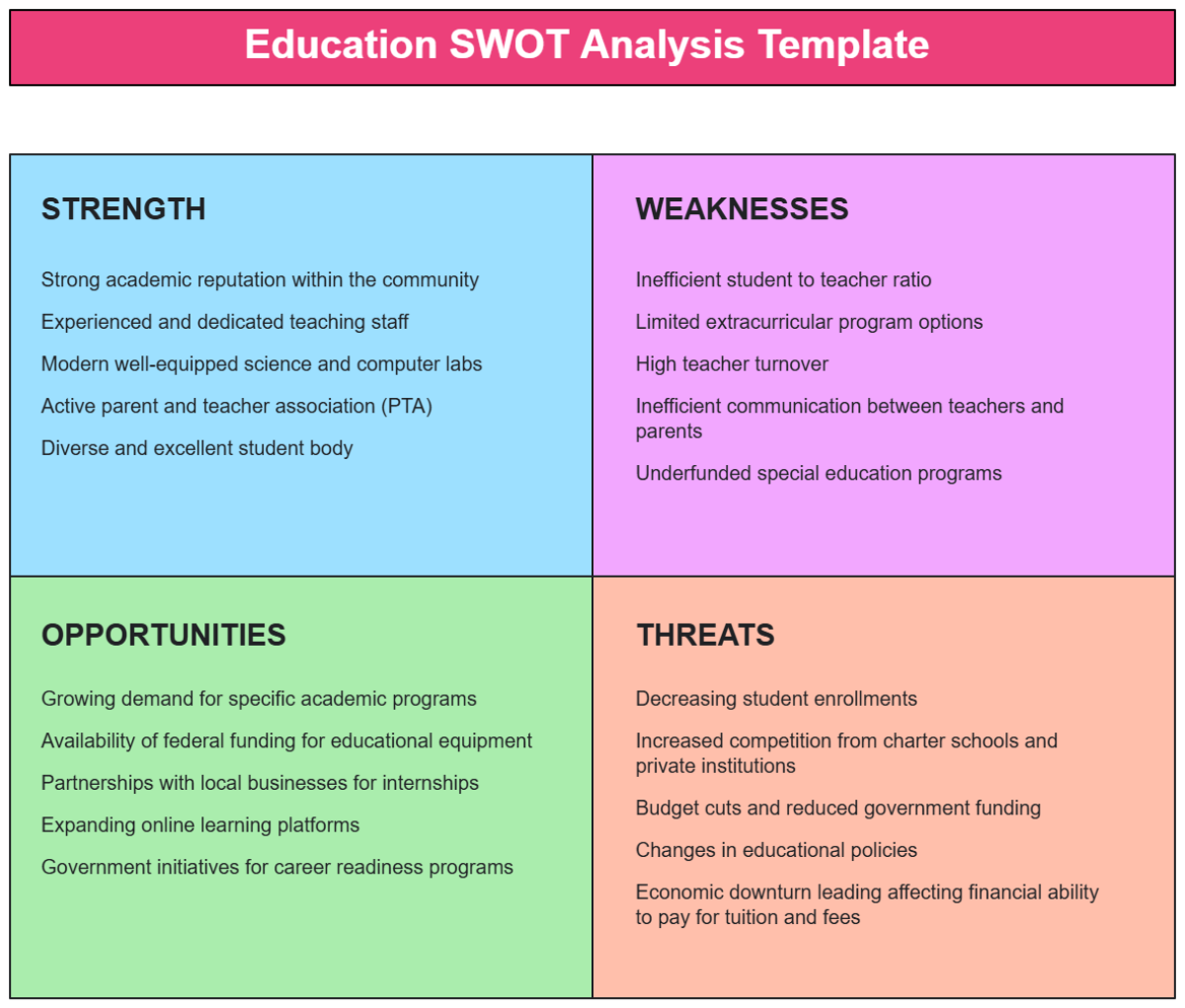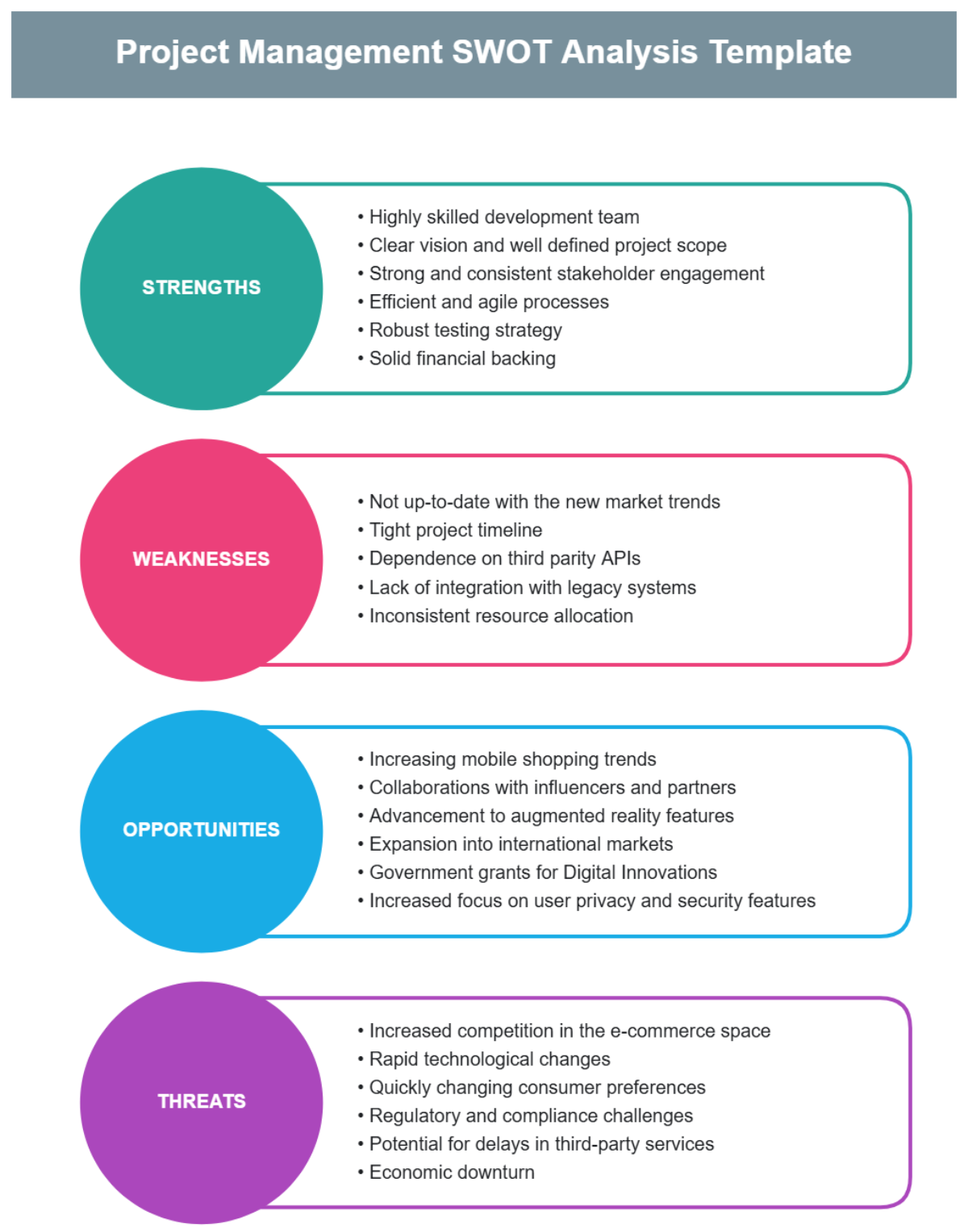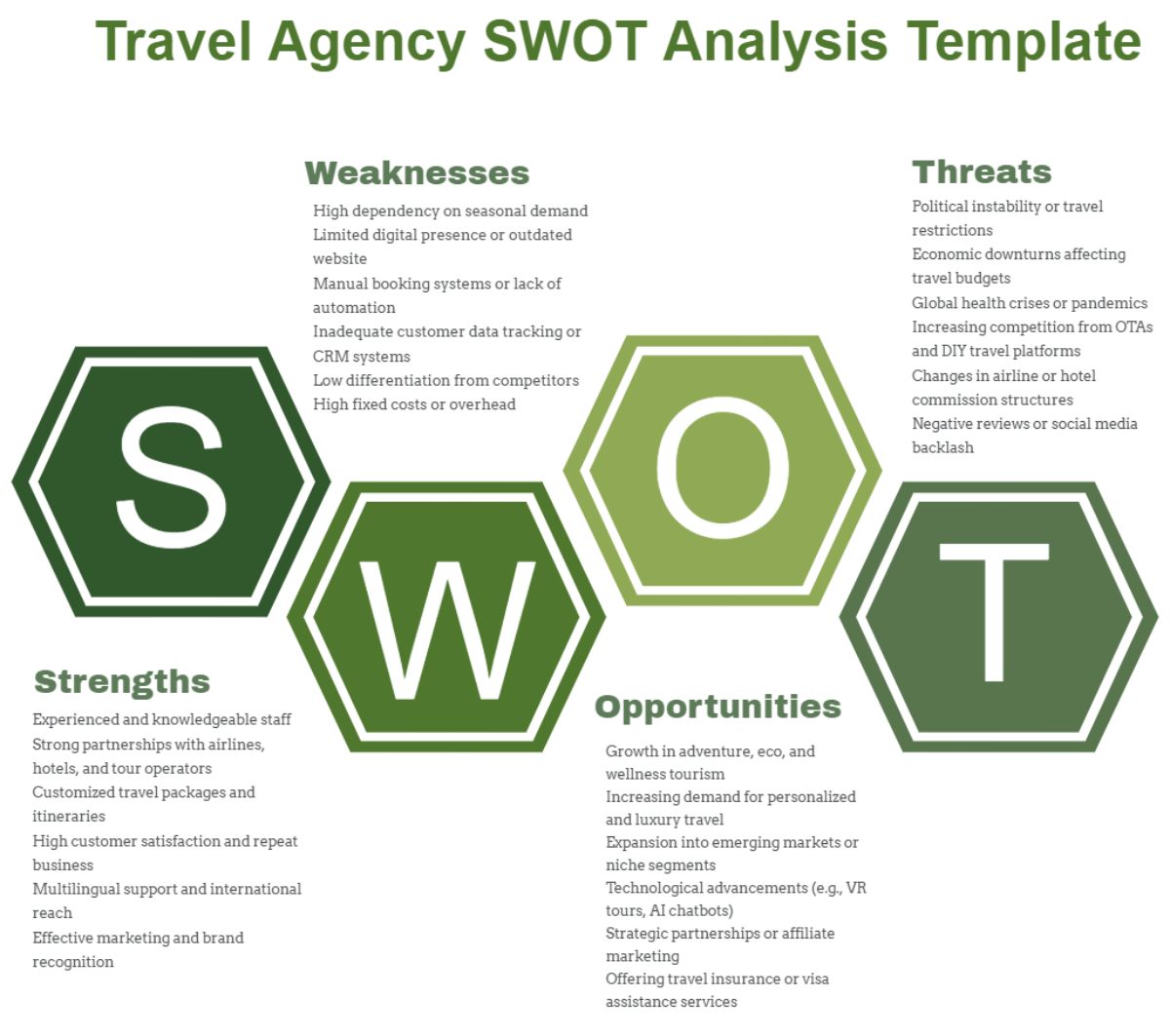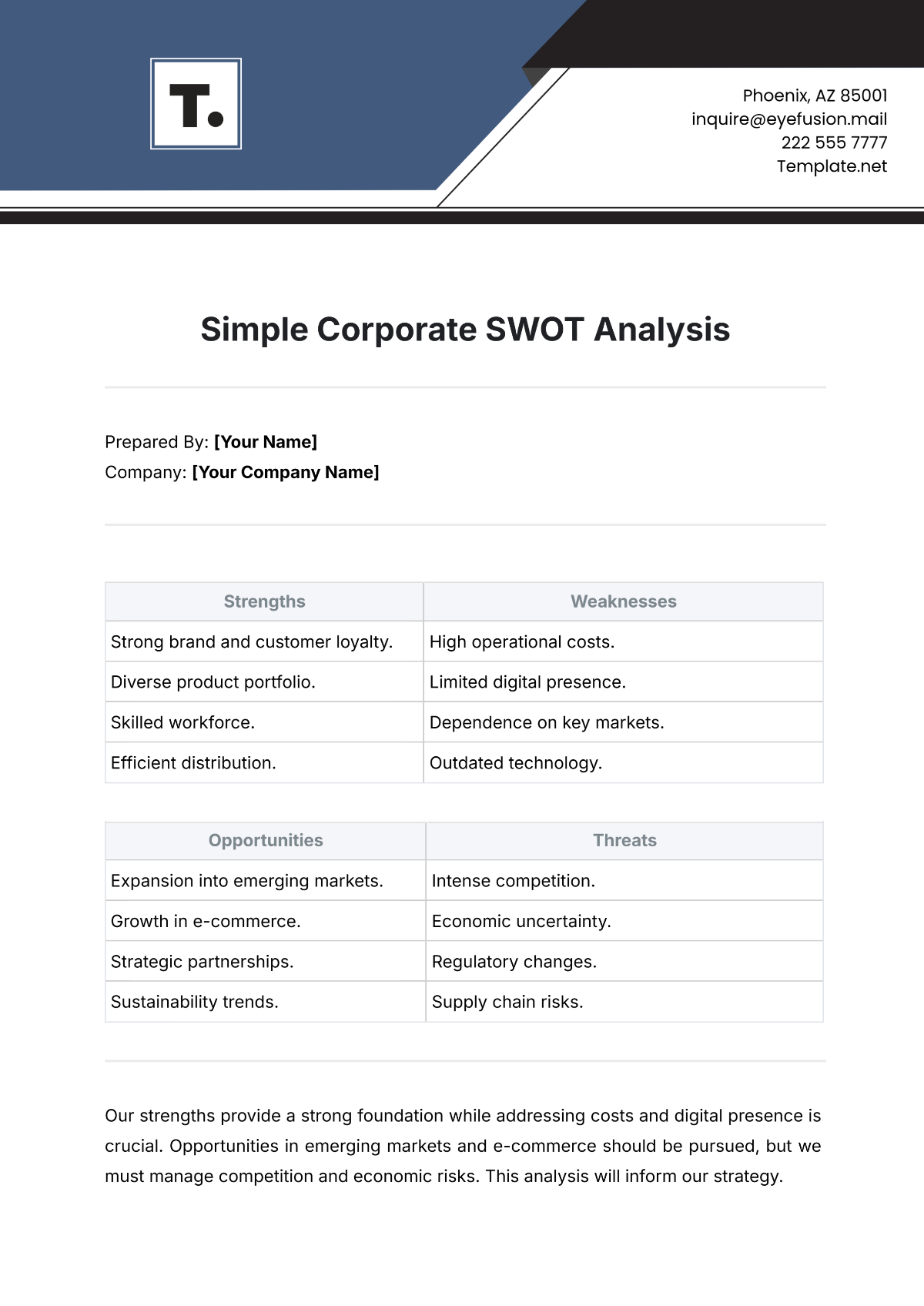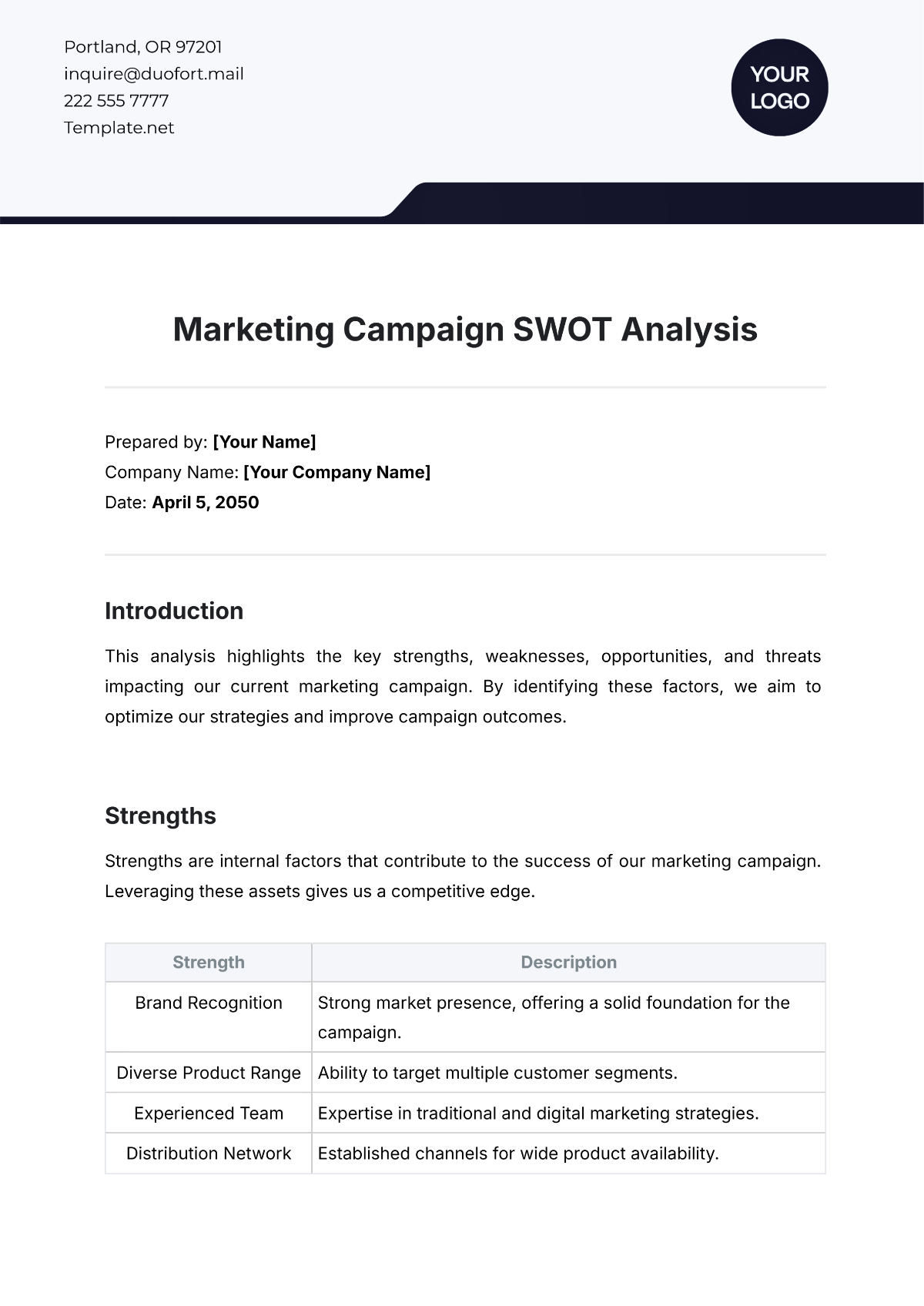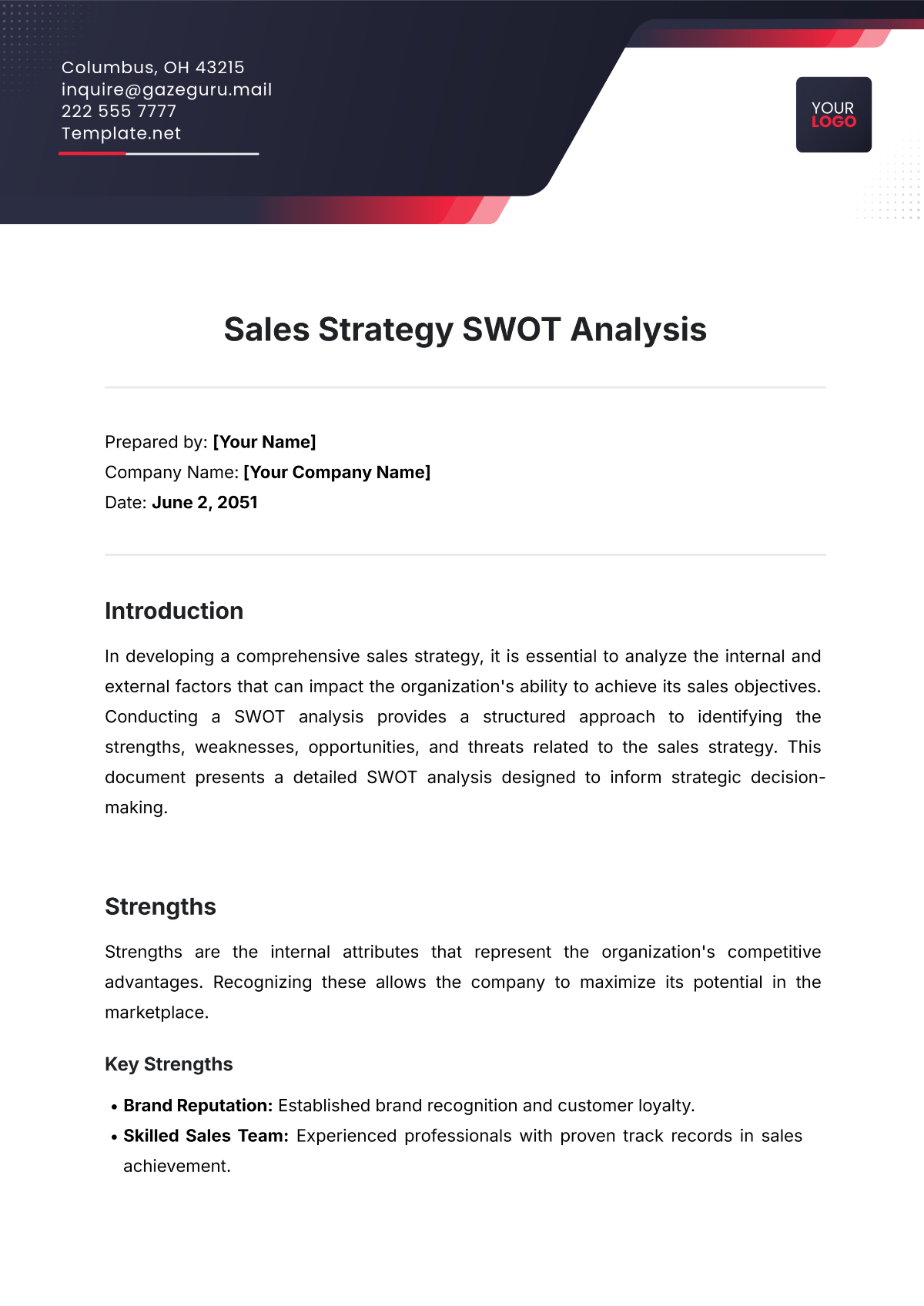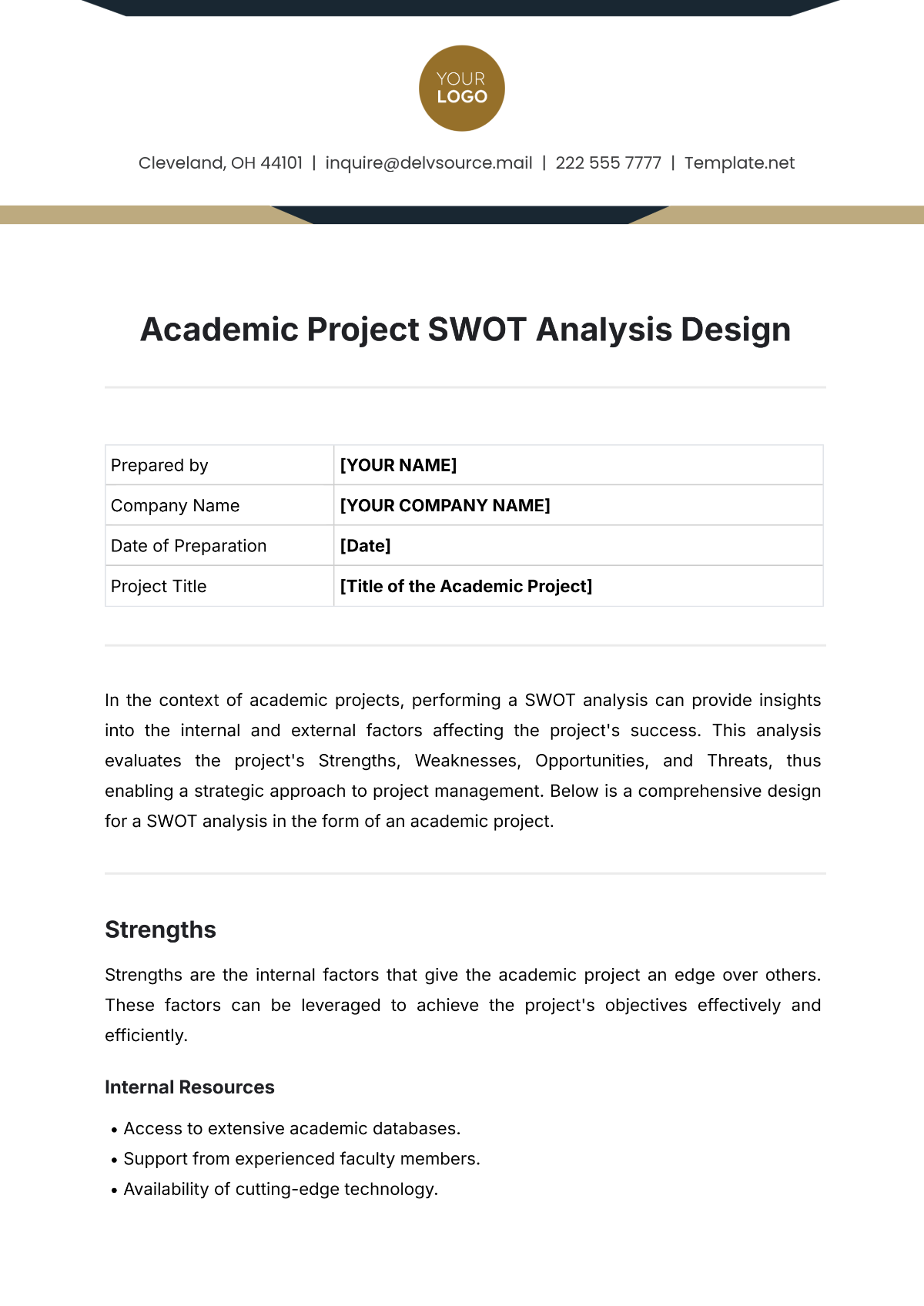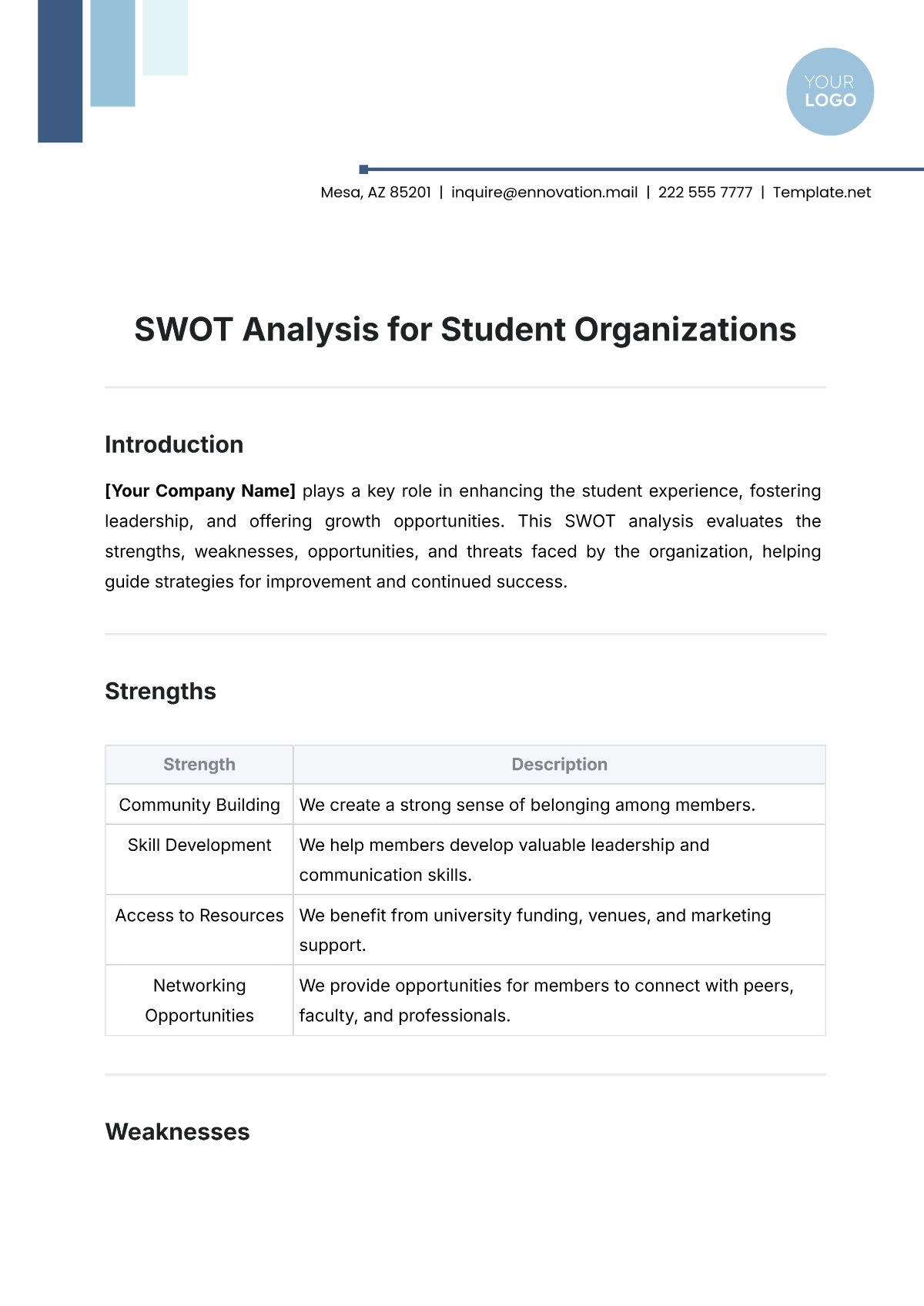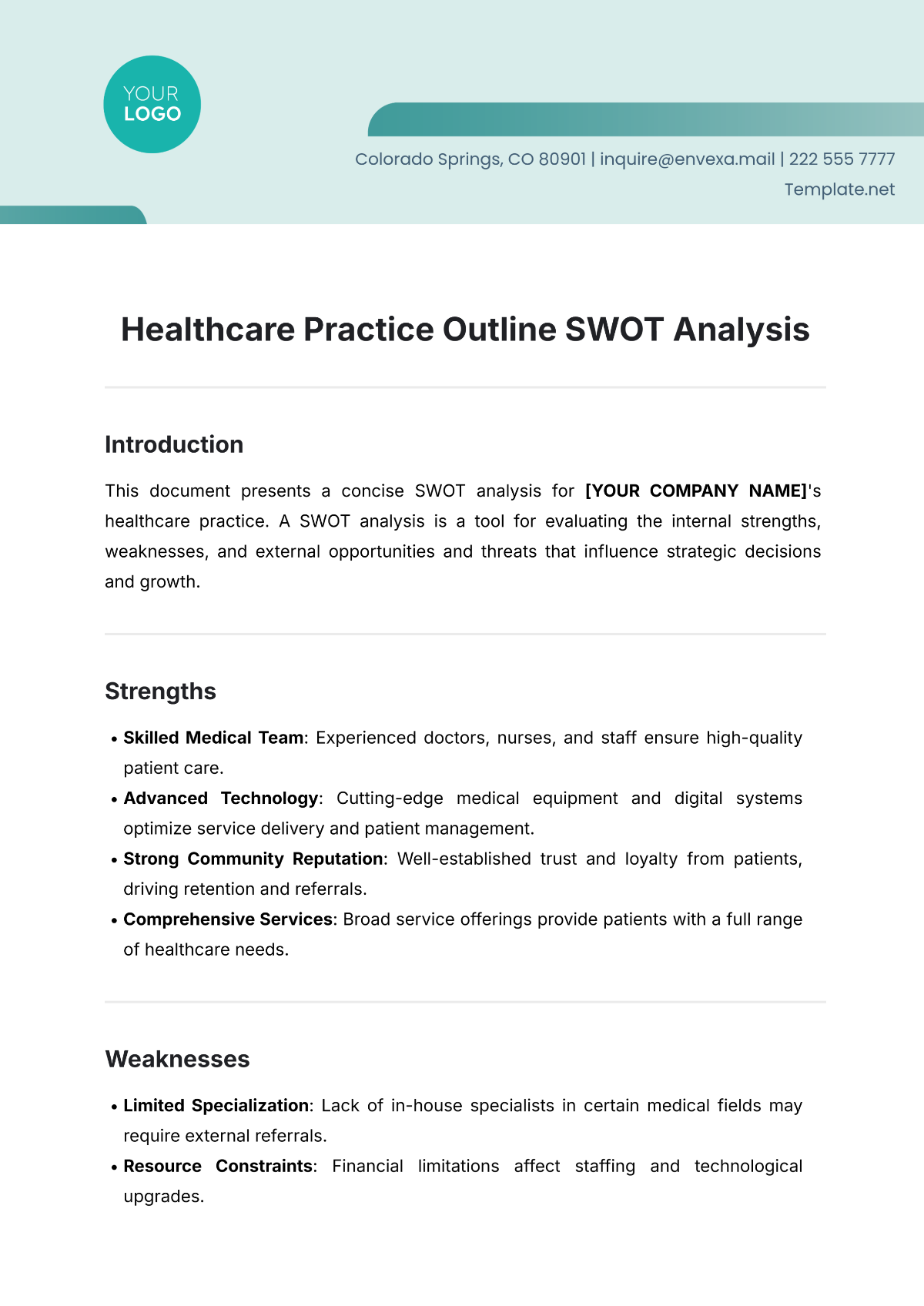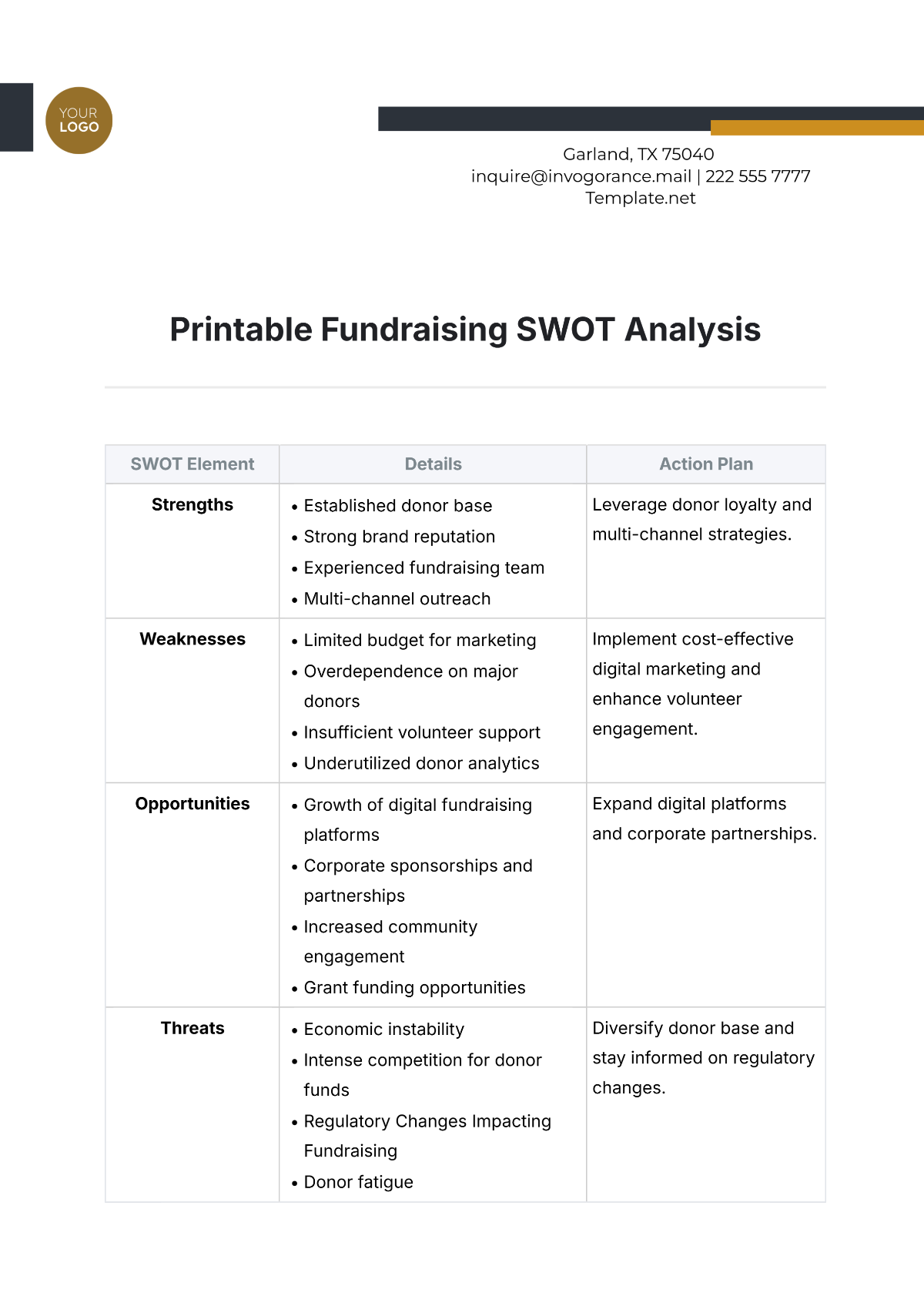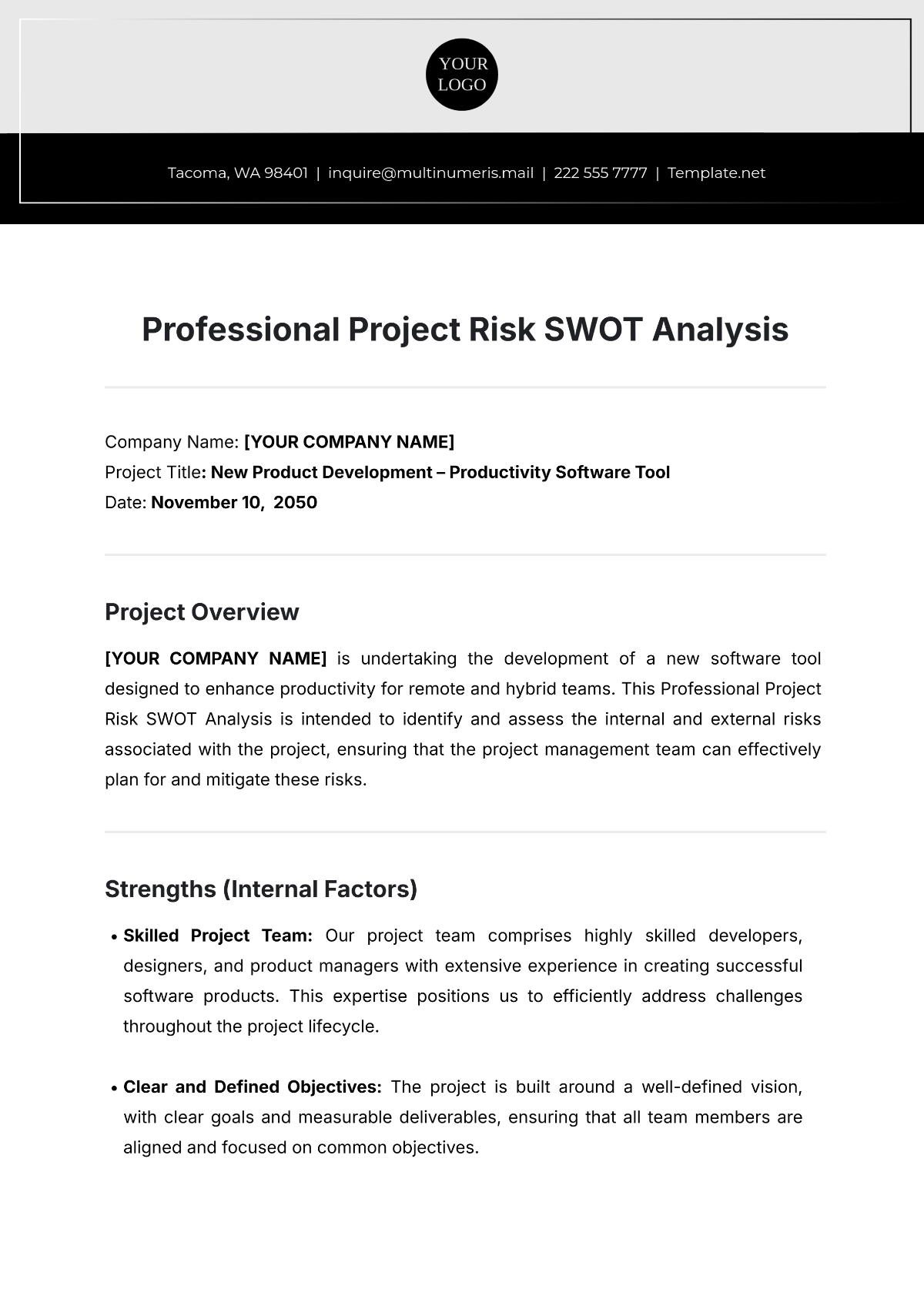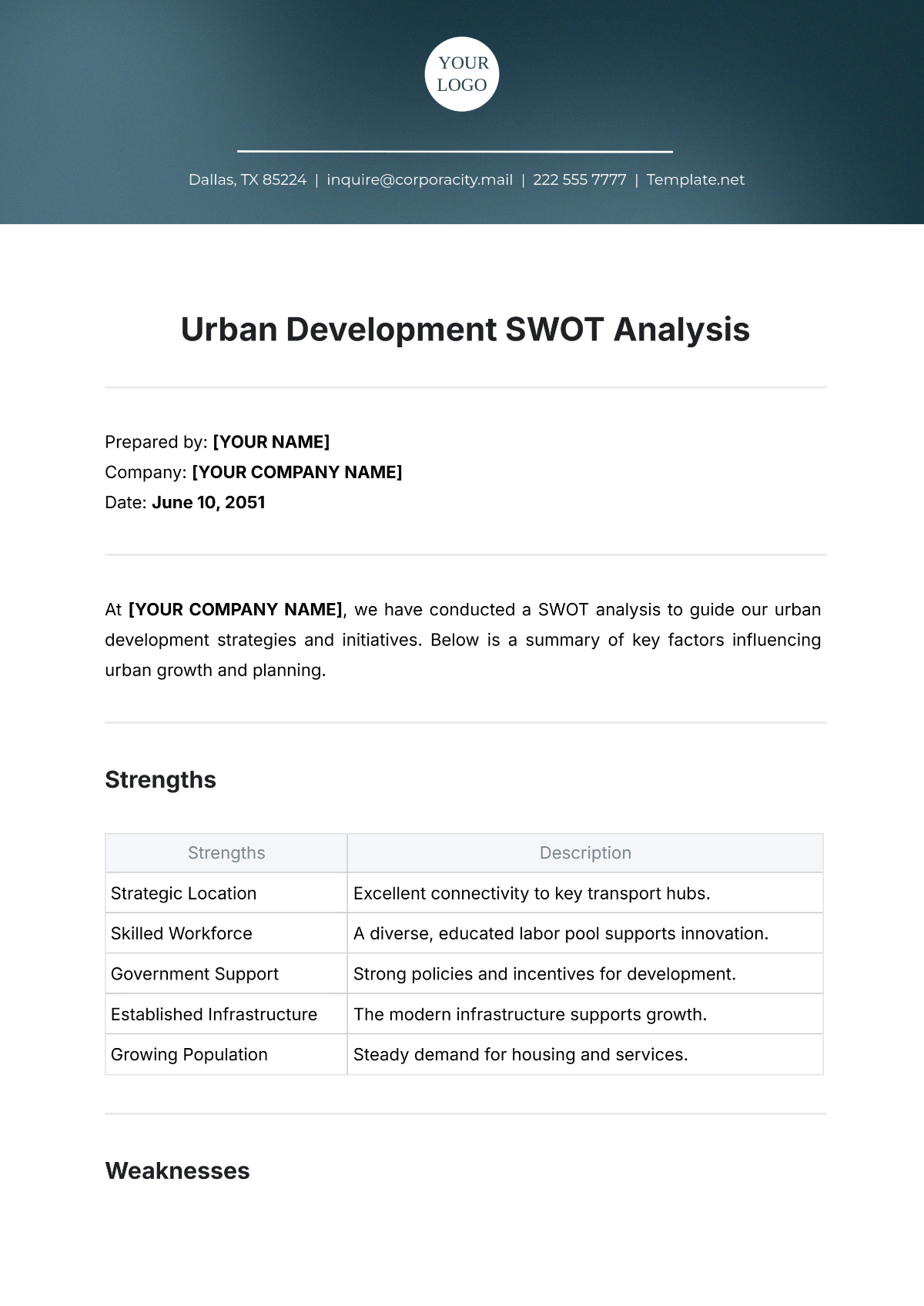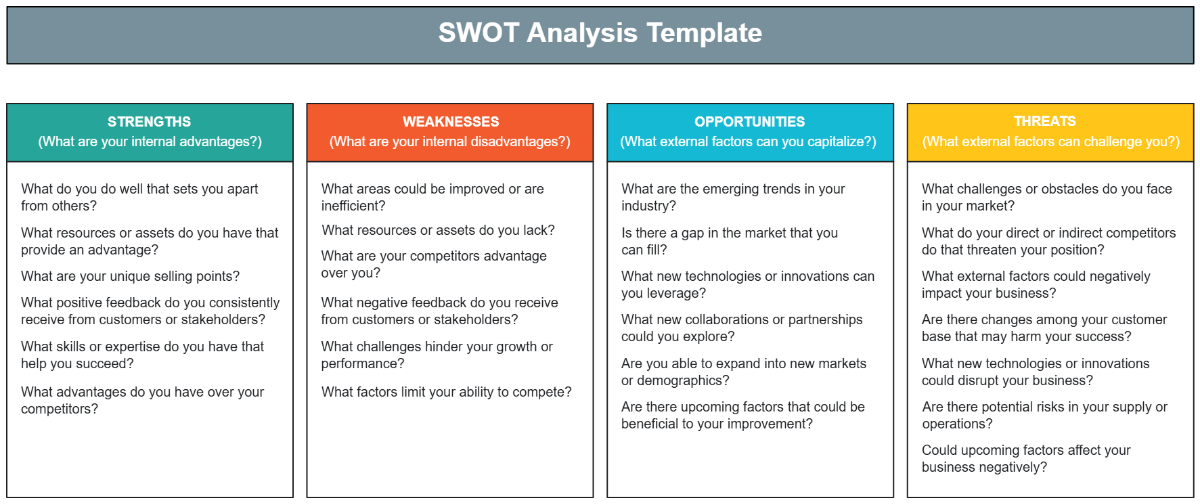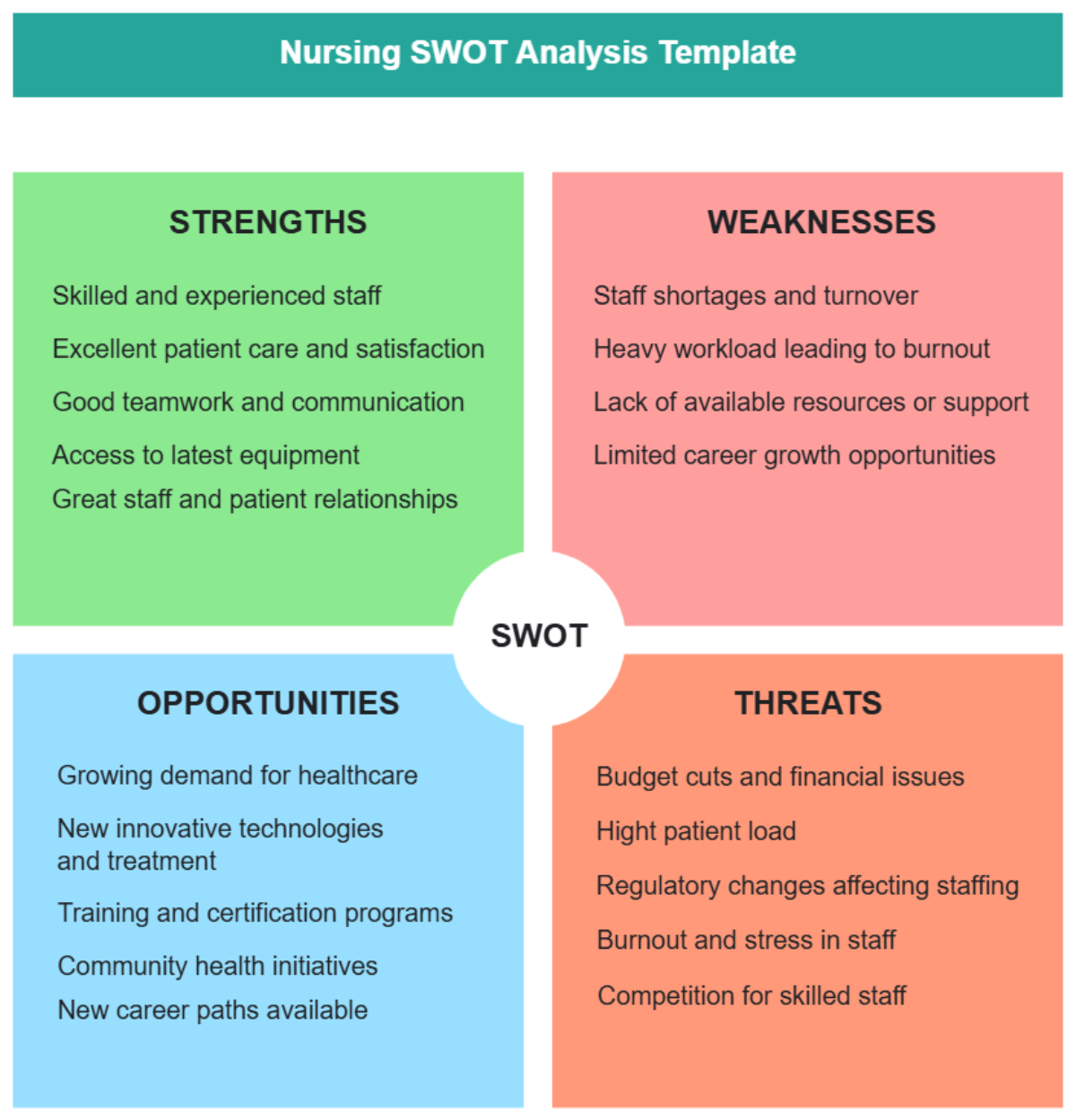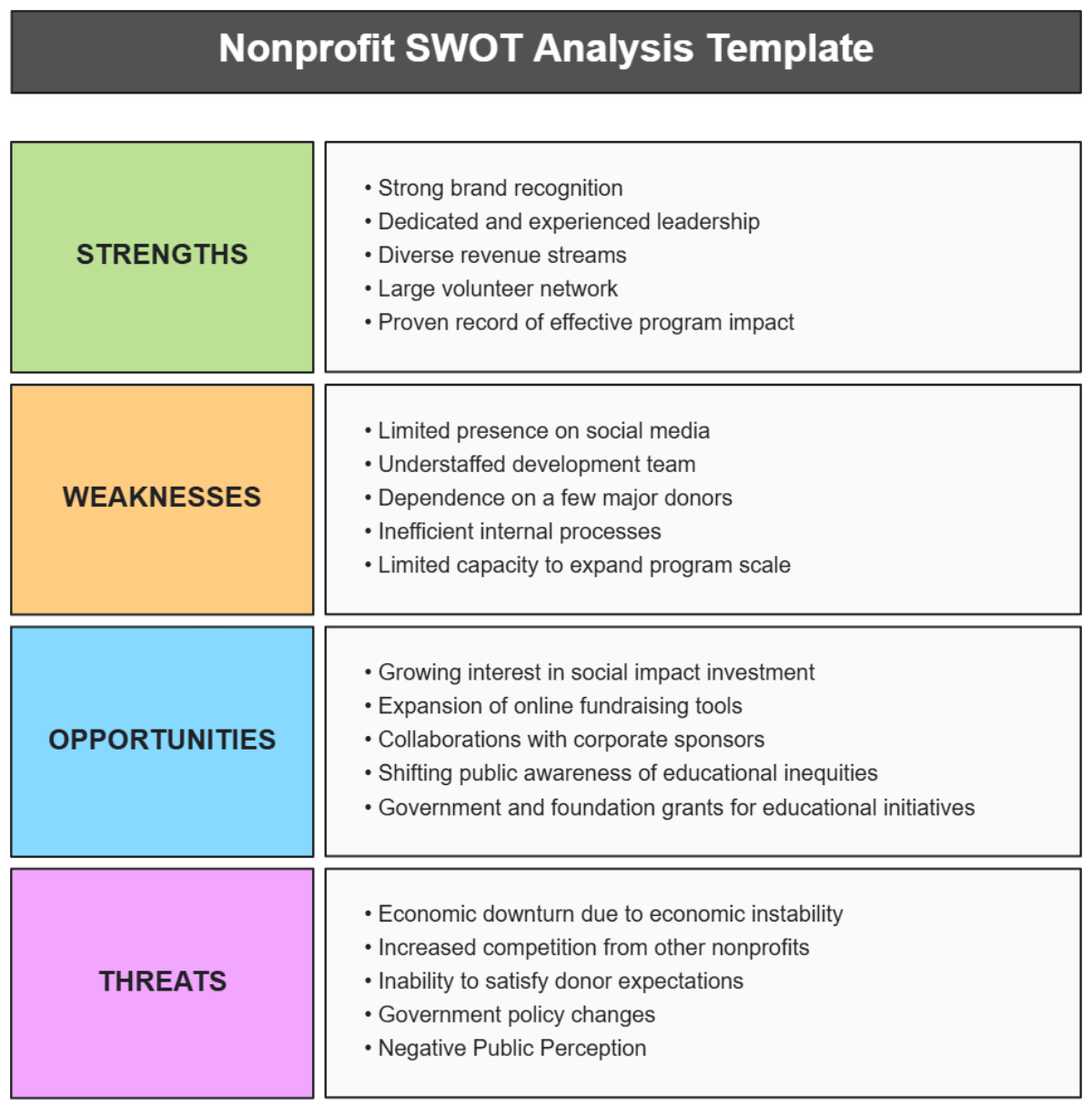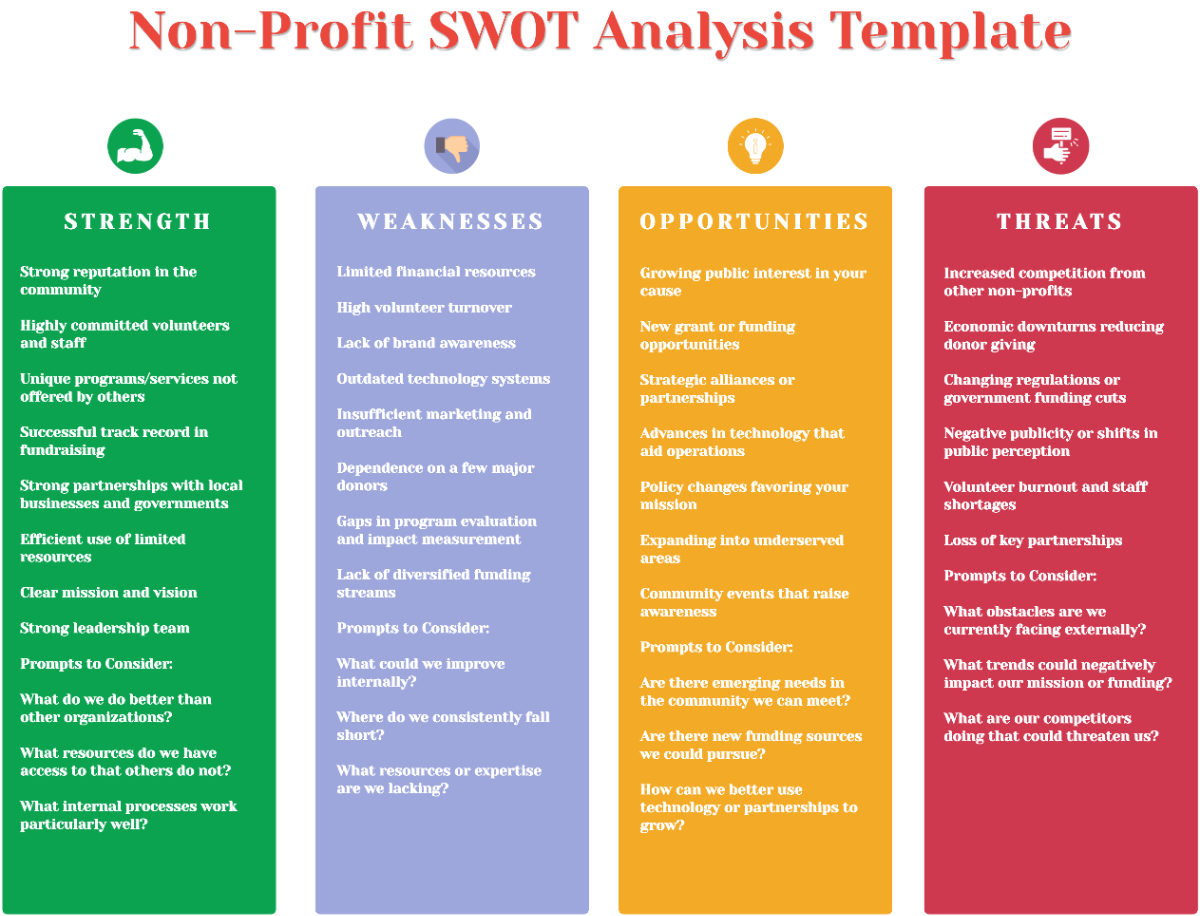Hazardous Material Handling SWOT Analysis
At [Your Company Name], the safe handling of hazardous materials is of paramount importance. With a commitment to ensure the well-being of our employees, safeguard the environment, and maintain our esteemed reputation, we continually evaluate our processes, equipment, and training programs. This SWOT Analysis delves into our current standing regarding hazardous material handling, highlighting our robust areas, areas needing improvement, potential opportunities to leverage, and external threats that may impact us. By critically examining these facets, we aim to chart a progressive path forward, ensuring optimal safety and compliance in our operations.
SWOT Overview
Strengths |
|
Weaknesses |
|
Opportunities |
|
Threats |
|
Strengths
In the realm of hazardous material handling, our company has consistently exhibited a commitment to best practices, rigorous training, and the well-being of its stakeholders. Our strengths in this area are:
Comprehensive Training Programs in Place
At our company, we pride ourselves on the robust training programs we've implemented. Over the past year, 98% of our staff underwent intensive training sessions, ensuring that they're well-equipped to handle hazardous materials safely and efficiently. These programs are updated annually, reflecting the latest industry standards and methodologies.
State-of-the-Art Safety Equipment Used
The safety of our employees and the environment is our top priority. We have invested over $500,000 in the last fiscal year to ensure that all our facilities are equipped with the latest safety gear and equipment. These tools not only meet but often surpass regulatory standards, showcasing our proactive approach to safety.
Consistent Track Record of Regulatory Compliance
For the past five years, our company has consistently received 'A' ratings in all regulatory inspections. Our dedication to adhering to both local and international safety regulations has garnered recognition, with our organization being awarded the "Safe Handling Champion" accolade by the National Safety Council in 2022.
Active Participation of Employees in Safety Feedback
A unique strength of our company lies in our inclusive approach to safety. Our internal platform, SafetyNet, saw over 1,500 constructive feedback entries from our employees in the past year. This system allows us to continually refine our safety protocols, taking into account the real-world experiences and insights of those on the front lines.
Weaknesses
Despite our unwavering commitment to safety and compliance, there are areas where our company can further strengthen its approach to hazardous material handling. Our identified weaknesses are:
Some Outdated Protocols Still in Use
While we have modernized many of our safety protocols, a few older procedures remain in use at certain facilities. These outdated protocols, though compliant with regulations, might not represent the best practices in the current context. For instance, our XYZ facility still follows a material storage procedure from 2018, which, though functional, might benefit from recent advancements in storage techniques.
Occasional Lapses in Documentation Updates
Proper documentation is crucial for ensuring safety and compliance. While our main facilities maintain up-to-date documentation, our satellite units have reported a 15% delay in updating their safety manuals and protocols. This lag might pose challenges in ensuring consistent safety standards across all units.
Limited Drills Simulating Hazardous Material Incidents
While we conduct regular training sessions, the frequency of our simulated drills isn't as consistent. In the past year, only two drills were conducted across our major facilities. Regular, scenario-based drills are essential in ensuring that the staff is prepared for real-world incidents.
Dependence on a Single Supplier for Safety Equipment
Currently, our company relies on a single vendor for most of its safety equipment. While this vendor has been reliable and provides quality equipment, this dependence poses a risk. If the supplier faces disruptions, it could impact our ability to source essential safety gear in a timely manner.
Opportunities
In the ever-evolving landscape of hazardous material handling, our company constantly seeks opportunities to further our commitment to safety and compliance. Our exploration has identified the following promising avenues:
Technological Advancements in Safety Equipment
The industry has witnessed significant technological strides in safety equipment in recent years. For instance, the introduction of Smart Helmets, which offer augmented reality safety checks, could revolutionize our on-ground safety procedures. By staying attuned to these advancements, our company can maintain its position at the forefront of safety innovation.
Partnership Opportunities with Renowned Safety Organizations
Collaborating with established safety organizations can provide our company with insights, training resources, and certifications that enhance our credibility and operational safety. Potential partnerships with entities such as the International Safety Council could open doors to advanced training modules, workshops, and collaborative projects.
Potential for Securing Grants Focused on Safety Enhancements
Various governmental and non-governmental bodies offer grants to companies dedicated to enhancing safety standards. By actively seeking these grants, our company could secure funding to upgrade equipment, conduct specialized training, or implement advanced safety systems. In the previous quarter, the National Safety Board announced a grant of $200,000 for initiatives promoting innovative safety practices, which our company is well-positioned to pursue.
Implementing a More Rigorous Employee Feedback System
While our existing platform, SafetyNet, has been beneficial, there's potential to evolve it into a more interactive and responsive system. Incorporating real-time feedback, setting up monthly feedback review meetings, and integrating AI-driven insights could elevate the system's efficiency. This would not only improve our safety protocols but also bolster employee morale by emphasizing their integral role in shaping safety at our company.
Threats
While our company is dedicated to maintaining the highest safety standards in hazardous material handling, it is equally essential to be aware of external threats that might challenge our operations and reputation. Our assessment has identified the following potential threats:
Upcoming Stringent Regulatory Changes
The landscape of safety regulations is dynamic, with authorities regularly reviewing and updating guidelines. Recently, there have been discussions at the federal level about implementing more stringent safety regulations. For instance, the upcoming amendments to the Hazardous Material Safety Act might introduce tighter restrictions on storage and transport. Navigating these changing regulations will require agility, timely updates to our protocols, and potentially increased operational costs.
Environmental Concerns and Their Impact on Operations
As global awareness about environmental sustainability grows, there's increasing scrutiny on companies handling hazardous materials. Any mishandling or accidental spill could lead to severe environmental repercussions. Moreover, there's a push towards adopting greener methods, which might necessitate alterations in our current operations and increased investments.
Rising Litigations in the Industry Related to Safety Breaches
The hazardous material handling industry has seen a spike in litigations over the past couple of years. Companies facing accidents or breaches are not only dealing with operational setbacks but also hefty legal battles. A single incident could lead to multimillion-dollar lawsuits, as seen recently in the case involving a prominent industry player, where the lawsuit amounted to $50 million.
Reputational Risks Tied to Any Potential Mishaps
In the age of instant communication, any mishap, however minor, can tarnish our company's reputation. Negative publicity can erode stakeholder trust, impact partnerships, and potentially result in lost business opportunities. Ensuring consistent positive public relations and swift incident management is pivotal to mitigate this threat.
Conclusion
The SWOT Analysis for hazardous material handling at our company provides a comprehensive snapshot of our current position, highlighting areas of strength and resilience while acknowledging opportunities for improvement and potential external threats. While our strengths underscore our longstanding commitment to safety, the identified weaknesses, opportunities, and threats provide us with a roadmap to further enhance our operations, bolster our reputation, and navigate potential challenges.
Recommendations
Update Safety Protocols: To address outdated protocols, initiate a biannual review of all safety procedures across all facilities. Ensure that the latest industry best practices are integrated.
Diversify Safety Equipment Suppliers: To mitigate the risks of relying on a single vendor, explore partnerships with alternative suppliers and consider a dual-supplier model for critical equipment.
Expand Drills and Simulations: Increase the frequency and variety of drills, ensuring that every facility undergoes at least one simulation every quarter. Incorporate real-time feedback mechanisms during these drills for immediate improvements.
Engage with Regulatory Bodies: Stay proactive by engaging directly with safety regulatory authorities. This can offer insights into upcoming regulatory changes, allowing our company to stay ahead of compliance requirements.
Eco-Friendly Initiatives: In light of rising environmental concerns, invest in research and training to adopt greener methods of hazardous material handling. This not only addresses environmental threats but also positions our company as a responsible industry leader.
